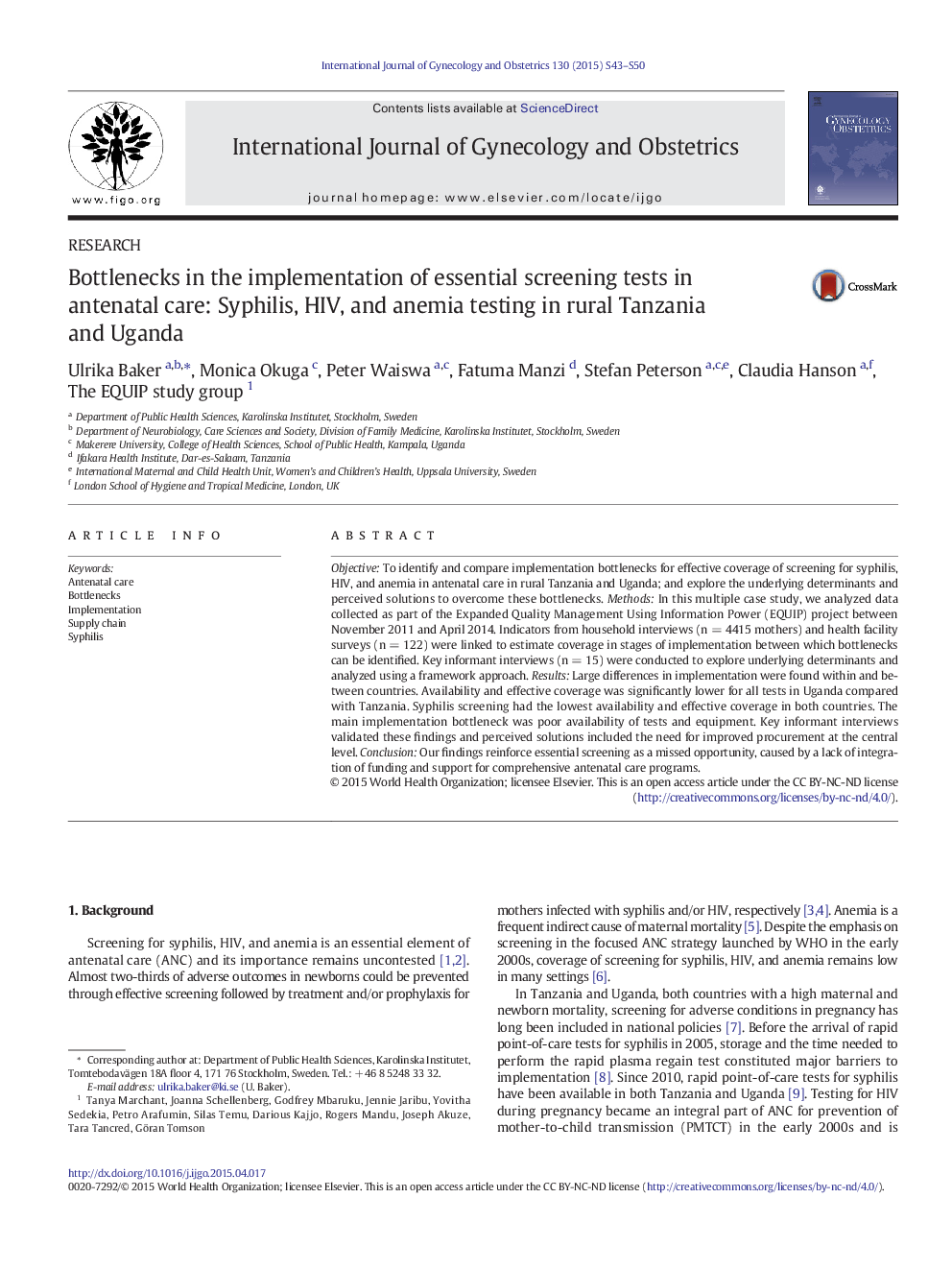| Article ID | Journal | Published Year | Pages | File Type |
|---|---|---|---|---|
| 3954173 | International Journal of Gynecology & Obstetrics | 2015 | 8 Pages |
ObjectiveTo identify and compare implementation bottlenecks for effective coverage of screening for syphilis, HIV, and anemia in antenatal care in rural Tanzania and Uganda; and explore the underlying determinants and perceived solutions to overcome these bottlenecks.MethodsIn this multiple case study, we analyzed data collected as part of the Expanded Quality Management Using Information Power (EQUIP) project between November 2011 and April 2014. Indicators from household interviews (n = 4415 mothers) and health facility surveys (n = 122) were linked to estimate coverage in stages of implementation between which bottlenecks can be identified. Key informant interviews (n = 15) were conducted to explore underlying determinants and analyzed using a framework approach.ResultsLarge differences in implementation were found within and between countries. Availability and effective coverage was significantly lower for all tests in Uganda compared with Tanzania. Syphilis screening had the lowest availability and effective coverage in both countries. The main implementation bottleneck was poor availability of tests and equipment. Key informant interviews validated these findings and perceived solutions included the need for improved procurement at the central level.ConclusionOur findings reinforce essential screening as a missed opportunity, caused by a lack of integration of funding and support for comprehensive antenatal care programs.
